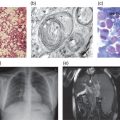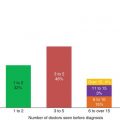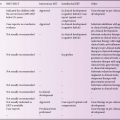Late stage approaches will be directed toward controlling self-propagating events resulting from tissue damage; these continue despite alleviation of the primary metabolic abnormality. Anti-inflammatory, anti-autophagocytic, or lysosomal membrane stabilization could be considered. Multiple therapies should be considered at most disease stages as tissue damage will likely have already occurred at the time of diagnosis.
The CNS and skeletal system will be the focus since they represent major unmet medical needs with current inadequate treatment. About two-thirds of the LSDs have primary CNS involvement. The selectively impermeable blood brain barrier is a major hurdle, but understanding the unique initial neuropathophysiologies is critical to future success. The emphasis for CNS LSDs should focus on pre-pathologic initial (enzyme deficiency correction) and propagating mechanism, i.e. prevention. Early intervention is based on accurate prognostic prediction and validated biomarkers; these will not be addressed.
Current approaches to the treatment of LSD skeletal disease (e.g. Gaucher disease, MPS types I, II, and VI) are inadequate. Little attention has been focused on the direct and indirect pathophysiological consequences of specific cell types in which storage materials preferentially accumulate (i.e. macrophages in Gaucher disease; chondrocytes in mucopolysaccharidosis type 1) and the particular microenvironments in which these cells are localized.
Approaches to CNS Enzyme Delivery
The blood–brain barrier (BBB) is impermeable to large proteins, and direct intrathecal (IT) or intraventricular routes for enzyme delivery are being evaluated in animal models, e.g. MPS I (dog), MPS IIIA (mouse), and Krabbe disease (mouse). Results show gradients of non-uniform enzyme distribution across the CNS, and clearance of the lysosomal storage material within glial and neuronal cells; improved survival and function resulted [3–5]. Intrathecal human trials are underway for MPS I, MPS II, and MPS IIIA. Reformulation of the IT therapeutic was essential for some. Indwelling devices for IT administration and direct infusions into cerebrospinal fluid present obvious risks to patients, including infection, and risks related to surgical procedures.
The differences in CSF circulation between humans and animals have not been fully delineated, nor have the potential effects of the disease itself and distribution of the IT enzyme. In human trials, knowledge of the disease stage at the start of treatment is essential because irreversible damage will limit potential efficacy. Currently available approaches for assessing the CNS are inadequate. For example, LSD neurological manifestations, (i.e. subtle MRI white matter aberrations) can be presymptomatic. Thus, a critical threshold may be exceeded before diagnosis/treatment.
Similarly in bone, threshold levels of disease may be exceeded and full recovery may not be possible. In Gaucher disease, osteonecrosis or lytic lesions have not been convincingly reversed. For both the CNS and bone involvement, early preventive therapy is an emerging field.
Alternative Enzyme Variants for CNS Targeting
Molecular Trojan horses, endogenous peptides or monoclonal antibodies attached to enzymes, or genes, can ferry the therapeutic across biological barriers, e.g. the BBB, via receptor-mediated transport [6]. Several receptor-mediated transcytotic mechanisms for BBB transport have been targeted, e.g. those for insulin, tumour necrosis factor β, and apolipoprotein E [7].
Chinese hamster ovary (CHO) cells [8] were engineered to produce a fusion protein of a genetically engineered monoclonal antibody (MAb) against the human insulin receptor (HIR) and iduronate-2-sulfatase (IDS), (MAbHIR)-IDS, which could be delivered to lysosomes of MPS II fibroblasts via the insulin receptor. In adult rhesus MPS II monkeys, (MAbHIR)-IDS showed a >20-fold greater uptake than IDS alone indicating the potential for CNS delivery of an intravenous injected macromolecule.
The intravenous or ventrical injection of viruses expressing fusion proteins of the HIV Tat protein transduction domain linked to β-glucuronidase into MPS VII mice improved the distribution of β-glucuronidase compared with viruses expressing non-Tat containing enzyme [9]. The Tat-fusion β-glucuronidase also showed greater tissue delivery and reduction in storage material than the unmodified enzyme [9]. The CNS distributions of these and other fusion proteins need detailed characterization to ensure that sufficient active enzyme reconstitution occurs globally rather than regionally. Other targeting peptides may be found, but the fusion proteins must retain activity and not have increased immunogenicity.
Nanotechnology refers to use of materials or devices that interact with biological systems at a molecular level [10] to enhance delivery to, or uptake by target cells, and/or reduce toxicity of the free drug to non-target organs [11]. Enzymes, drugs (e.g. substrate reduction therapeutics), and genes can be encapsulated into nanoparticles of various compositions [11]. Such flexibility can facilitate more selective delivery to many tissues or to sequestered tissues, i.e. bone and CNS, as well as a protection of the biopharmaceutical from denaturation. For example, calcium alginate microspheres encapsulating glucocerebrosidase (the enzyme deficient in Gaucher disease) showed improved delivery to bone [12]. The enzyme retained full activity and had sustained release. Clinical efficacy remains to be demonstrated. Inflammatory and toxic effects of nanotherapy do occur and will require more complete study [11].
Gene/Cell Based Interventions
Gene-based therapies provide potential for a stable, long-term CNS and non-CNS LSD treatment. The goal of gene-based approaches is cell-specific reconstitution of enzyme/proteins using gene-corrected cell replacement or by metabolic cross-correction due to enzyme secretion and uptake into non-gene-corrected cells. Importantly, thresholds for correction must be exceeded. Ideally, the gene-corrected cells would be recipient derived, genetically altered, and returned to the same individual to avoid immunologic rejection.
Gene addition, gene correction/alteration, and gene knock-ins, viral and liposomal vectors, and in vivo or ex vivo
Stay updated, free articles. Join our Telegram channel

Full access? Get Clinical Tree








